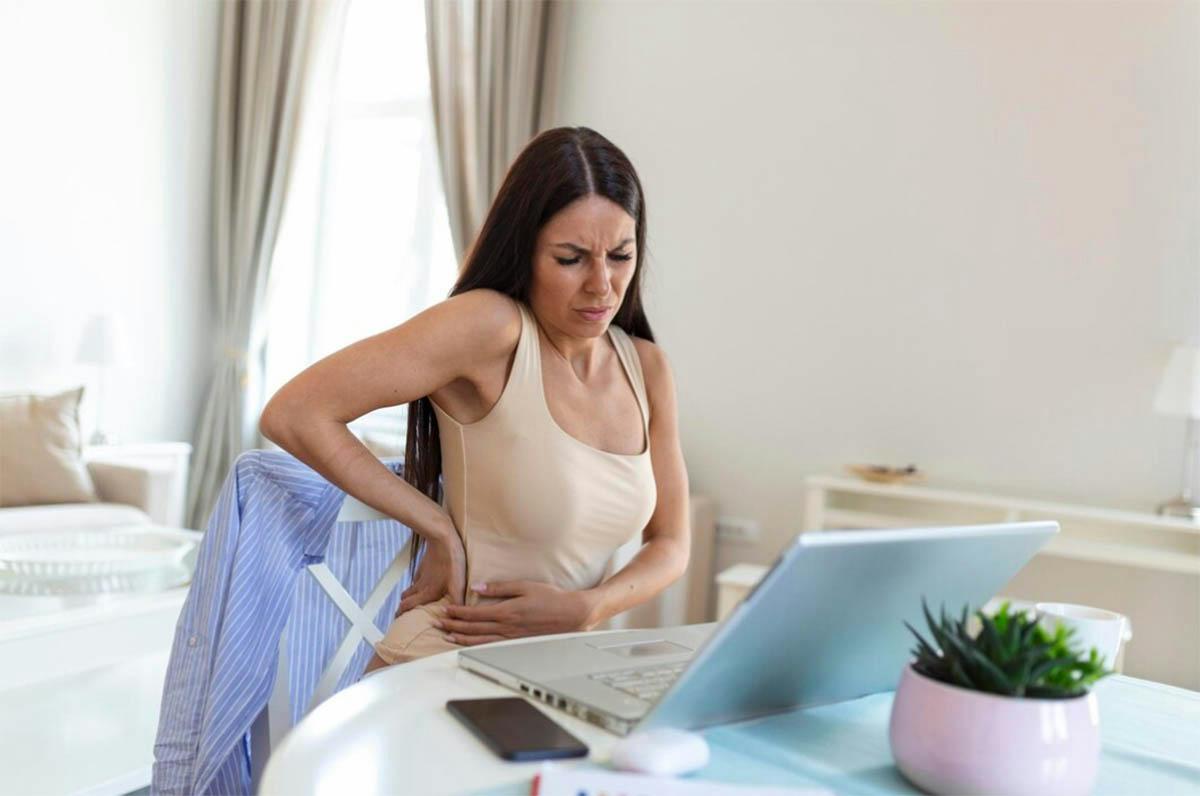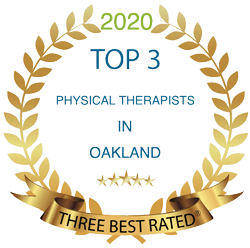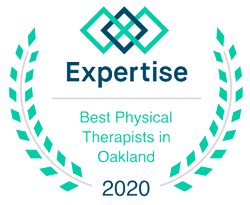Introduction
Hip pain postpartum affects many new mothers, stemming from the stress placed on the hip joints and pelvic region during pregnancy and vaginal delivery. As the body prepares for childbirth, hormones cause relaxation in the connective tissues, particularly around the pelvic bones, which can lead to pelvic girdle pain and sacroiliac joint discomfort. This pain can interfere with the joy of the postpartum period, affecting a mother’s ability to carry out daily activities and reducing her overall quality of life. Even months after delivery, some women continue to experience sharp pain or a deep ache in their hips and groin area.
What is Hip Pain in the Postpartum Period?
Hip pain after childbirth is not uncommon. During the postpartum period, the pelvic floor and abdominal muscles are often weakened, and the pelvic joints, particularly the sacroiliac and hip joints, may remain loose due to the lingering effects of pregnancy hormones. This can result in misalignment and pain. Postpartum hip pain may present as a sharp pain or a consistent throb in the hip, groin, or thigh bone areas.
In some cases, pelvic girdle pain experienced during pregnancy may continue or even worsen after childbirth. Seeking advice from a physical therapist experienced in postpartum care is crucial to addressing the pain effectively and ensuring that it does not become chronic. They can guide new mothers through exercises and recommend lifestyle changes that cater to personal medical history, ensuring a targeted approach to recovery.
Is it normal to have hip pain after pregnancy?
Having hip pain postpartum is quite normal. The body undergoes significant changes during pregnancy and childbirth, impacting the skeletal structure, especially in the pelvic region. Due to hormonal changes, the ligaments and connective tissues around the hip joints and pelvic bones relax to accommodate childbirth, and this can lead to joint instability and pain after pregnancy.
The pelvic floor, which is often weakened during pregnancy and childbirth, contributes to stabilizing the hip area. Therefore, it’s not unusual to experience discomfort in the pelvic region, including the hips, for months after delivery. While pelvic and hip pain typically fades over time as the body recovers, it should not be ignored. Engaging in physical therapy under the guidance of a trained physical therapist can help alleviate pain and facilitate a return to normal daily activities.
Common Causes of Postpartum Hip Pain
Common Causes of Postpartum Hip Pain include a variety of factors that new mothers may face after childbirth. Relaxin hormone changes during pregnancy can loosen ligaments, leading to hip instability. Symphysis Pubis Dysfunction (SPD) and Pelvic Girdle Pain (PGP) are specific conditions that cause discomfort in the pelvic region due to misalignment or stiffness of pelvic joints.
Postural changes from carrying a baby and nursing can put additional strain on hip joints. Muscle strain and weakness, particularly in the abdominal and pelvic floor muscles, can also manifest as hip pain. Pre-existing conditions like arthritis may be exacerbated postpartum.
During childbirth, the trauma experienced by the pelvic bones and the sacroiliac joint can result in lingering pain. The physical stress of childcare tasks can further stress the hip area. Weight gain and the changed distribution of body mass during pregnancy can impact hip alignment and comfort.
A lack of exercise might contribute to ongoing hip discomfort by preventing the strengthening of the supportive muscles around the hip and pelvic area.
Why does hip pain happen after giving birth?
Hip pain after giving birth is a common complaint among new mothers. Various factors contribute to this discomfort during the postpartum period. The hormone relaxin, which increases during pregnancy to prepare the body for childbirth, can cause ligaments to relax and lead to hip joint instability. Conditions such as Symphysis Pubis Dysfunction (SPD) and Pelvic Girdle Pain (PGP) can cause pain as a result of misalignment or stiffness in the pelvic region.
Additionally, the strain of carrying a growing baby and the physical demands of nursing often alter a woman’s posture, leading to muscle strain. Trauma to the pelvic bones and sacroiliac joint during vaginal delivery can also contribute to postpartum hip pain. Engaging in daily activities and caring for a newborn can overburden the hip joints. Over time, if hip pain is not addressed, it can evolve into chronic hip pain, impacting the quality of life. Thus, it’s essential to seek a professional opinion, possibly from a physical therapist, to manage and mitigate hip pain after pregnancy.
Symptoms and Diagnosis
Experiencing discomfort in the hip region postpartum is normal but warrants attention. The symptoms often include:
- Pain in the Hip Area: A dull ache or a sharp pain that may be constant or intermittent.
- Stiffness: Difficulty moving the hip joint as usual, which can be more noticeable in the morning.
- Reduced Range of Motion: Struggling to perform once-easy movements.
- Swelling or Tenderness: The area around the hip might appear swollen or feel sensitive when touched.
- Difficulty Walking: A limp or discomfort when putting weight on the affected side.
- Clicking or Popping Sounds: Hearing unusual sounds from the hip joint during movement.
- Radiating Pain: Discomfort that spreads from the hip to the groin, thigh, or lower back.
- Increased Pain During/After Physical Activity: Aggravation of pain with motion or exertion, then persistence afterward.
- Pain When Lying on the Affected Side: Discomfort disrupting sleep or rest.
- Difficulty in Performing Daily Tasks: Challenges with actions such as bending, lifting, or climbing stairs.
Diagnosis typically begins with a medical history review and physical exam. A physician or physical therapist may order imaging tests to further evaluate the condition of the hip and surrounding tissues. It’s crucial to determine the cause to provide effective treatment and improve one’s quality of life.
Solutions and Management
Physical Therapy
Physical therapy offers an effective approach for alleviating postpartum hip pain through exercises designed to enhance posture, strengthen muscles, and ease discomfort in the hips, pelvic area, and lower back. These postpartum hip pain exercises include bridges for gluteal muscle strengthening and hip stabilization, clamshells targeting hip abductors for stability, hip abduction with resistance bands to engage hip abductor muscles, and hip extensions to bolster the gluteal muscles.
The piriformis stretch helps alleviate tightness in the hip, while the quadruped hip extension focuses on the hip extensors for stability. Standing hip flexion exercises strengthen hip flexor muscles, and the seated butterfly stretch aims at inner thigh muscles to relieve hip tension. Incorporating these exercises into a postpartum physical therapy regimen can significantly improve muscle strength, flexibility, and overall recovery from hip pain.
Pain Management
Managing pain from pelvic bone issues, including post-childbirth conditions and Symphysis Pubis Dysfunction (SPD), involves various strategies to alleviate discomfort and facilitate healing.
Medication options include paracetamol (acetaminophen) for mild to moderate pain, which is safe during pregnancy and breastfeeding within recommended doses, and NSAIDs like ibuprofen for reducing inflammation, though consultation with a healthcare provider is crucial before their use. In certain cases, local anesthetics or steroid injections may be employed for long-term relief.
Non-pharmacological approaches include heat and cold therapy to soothe pain and inflammation, emphasizing the importance of rest and adopting proper body mechanics to avoid exacerbating pain. Engaging in low-impact exercises, such as walking, swimming, or prenatal/postnatal yoga, can aid in restoring hip stability and strengthening the pelvic region, while consultation with a physical therapist can offer specialized exercises and techniques for pelvic floor relaxation.
Pelvic floor massage therapy may also serve to ease muscle tension and enhance relaxation in the pelvic area. Consulting healthcare professionals is essential for personalized treatment plans and safe medication use, especially during pregnancy or breastfeeding, to avoid potential adverse effects on both mother and baby.
Posture Correction While Carrying Baby Preventing Hip Pain
For new mothers, maintaining proper posture is vital to prevent and relieve postpartum hip pain associated with carrying a baby. The use of ergonomic baby carriers that ensure proper support and weight distribution can significantly reduce strain on the hips and lower back. Such carriers should have adjustable straps and waistbands for a custom fit, helping keep the baby close to the mother’s center of gravity.
It’s also important to switch carrying sides regularly to avoid muscle imbalances and evenly distribute weight, thus preventing strain. Strengthening core muscles through targeted exercises, like gentle core and pelvic floor exercises recommended by healthcare providers or physical therapists, supports good posture and reduces hip pain.
Maintaining hip alignment, avoiding excessive tilting, and using proper lifting techniques—bending the knees and using leg muscles instead of bending from the waist—are key to minimizing discomfort. Staying active with low-impact exercises such as walking, swimming, or prenatal/postnatal yoga under professional guidance can improve muscle strength, flexibility, and joint stability.
Regular gentle stretching, focusing on hip-opening exercises, can also alleviate tension. Additionally, being mindful of maintaining a neutral spine position with relaxed shoulders and aligned head throughout the day, even when not carrying the baby, helps in reducing the risk of hip and back pain.
Alternative Therapies
Alternative therapies offer beneficial approaches to managing postpartum hip pain by focusing on muscle strength, flexibility, and body mechanics to reduce discomfort and encourage healing.
Physical therapy is a cornerstone treatment, emphasizing the restoration of pelvic and core muscle stability essential for joint stabilization, through exercises that enhance spinal stability, posture, and muscular support around the SI joints, complemented by general conditioning for overall health.
Pelvic massage therapy contributes to pain relief by easing muscle tension, enhancing circulation, and fostering relaxation, with therapists employing techniques suited to prenatal and postnatal needs.
Yoga and Pilates, as low-impact forms of exercise, improve flexibility, core strength, and posture, aiding in hip joint mobility and stress reduction for a better sense of well-being. Osteopathy offers a holistic treatment modality, using manual adjustments and stretching to realign the body, targeting the underlying causes of hip pain to restore function and balance.
Discover Relief from Hip Pain Postpartum with Life In Motion Physical Therapy: Your Path to Recovery and Wellness
Postpartum hip pain can be a common and debilitating condition that many women experience after giving birth. The discomfort and limitations it brings can affect daily activities and hinder the joy of motherhood. Fortunately, there is hope for postpartum hip pain treatment and recovery with the help of Life In Motion Physical Therapy.
Life In Motion Physical Therapy understands the unique challenges that women face during the postpartum period. Their team of experienced physical therapy specialists has years of expertise in treating various conditions, including postpartum hip pain. They offer a comprehensive and individualized approach to help you overcome your pain and regain your quality of life.
Their approach involves a combination of therapeutic exercises, manual therapy techniques, and specialized interventions tailored to your specific needs. The goal is to address the underlying factors contributing to your hip pain and promote healing and strength in the affected area.
If you’re ready to take the first step towards overcoming postpartum hip pain and reclaiming your wellness, Life In Motion Physical Therapy is here to help. Their team of skilled professionals is committed to providing compassionate and effective care to help you achieve optimal recovery and regain your active lifestyle.
Conclusion
In the postpartum period, hip pain can notably diminish a mother’s quality of life, affecting her ability to carry out daily activities and care for her newborn. Physical therapy guided by a knowledgeable physical therapist is a cornerstone for managing such discomfort, focusing not only on the hip joints but also on the pelvic region as a whole, including the pelvic floor muscles and abdominal muscles. Incorporating exercises that strengthen and stabilize the pelvic girdle and the sacroiliac joint can bring substantial relief.
FAQs
How long does it take for your hips to go back to normal?
Postpartum hip changes and the duration for hips to return to “normal” vary among women, influenced by factors such as muscle strength recovery, labral tears, hormonal fluctuations, and individual health conditions.
Post-pregnancy, the abdominal and pelvic muscles, weakened by the expanding uterus, typically take about eight weeks to regain strength, potentially stabilizing the hips and reducing pain. Labral tears from labor can affect recovery time, requiring possibly physical therapy or surgery.
Hormonal changes during postpartum and breastfeeding may also cause joint inflammation and pain. Recovery is individualized, emphasizing the importance of consulting healthcare providers for personalized advice and management.
Does hip pain go away eventually?
For most women, hip pain postpartum will gradually diminish as the body recovers and strength is regained in the pelvic region and hip joints. However, time frames can differ, and if pain persists or becomes chronic, it may be indicative of a need for medical assessment and treatment. Engaging in proper physical therapy and exercises can expedite the relief and restoration of normal hip function.
Is walking OK for hip pain?
Walking can be beneficial for managing hip pain postpartum as it gently strengthens the hip and pelvic muscles without placing excessive strain on the joints. It is important to start slowly and gradually increase intensity, ensuring to listen to the body’s cues. If walking exacerbates the pain, it is advisable to seek advice from a healthcare provider or a physical therapist.
Cheers,
Logan Lynch
Owner & Head Clinician at Life In Motion Physical Therapy




